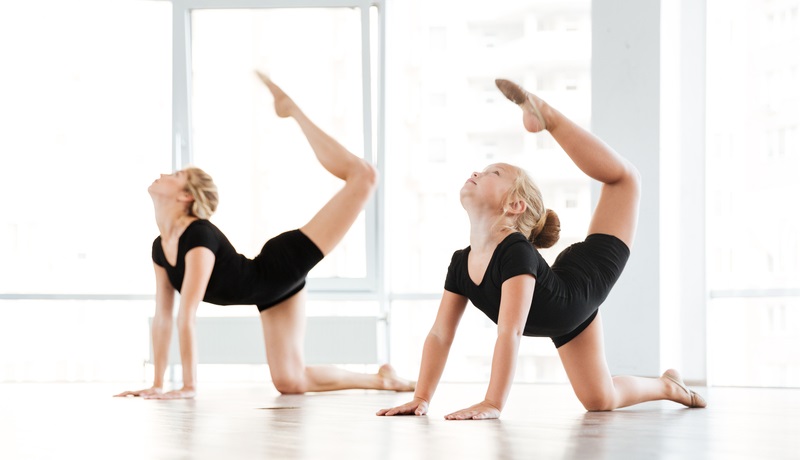Update May 27, 2020: South Australian studio owners are particularly frustrated today as Stage 2 restrictions, allowing 20 dancers per studio have now been changed to 10, as of May 26. Non contact indoor sports and classes using gym equipment are able to have 20 students, but unfairly, dance classes cannot. SA Studio Owners and teachers urge you to email ORSR.COVID19support@sa.gov.au to make your voice heard. This ruling makes no sense and will cripple our already hurting industry.
Australian schools are reopening, but dance schools all across Australia are still closed amid the Covid-19 restrictions. Why? For social distancing? Dance classes lend themselves to social distancing already, unless doing partner work, which is easily avoided, so why don’t we open the doors?
The vast majority of those who attend dance schools are children – the same demographic as those at our local primary and secondary schools, which are now reopening in states such as the Northern Territory and South Australia, as well as New South Wales from week three of this term in light of the large decline in cases nationwide and “low rate of community spread” (Professor Nicola Spurrier, Chief Medical Officer SA).
Dance studio spaces are large, because they have to be, or students would literally kick one another in the face! As an integral part of dance training, students learn about spatial awareness, and they are very used to giving one another room to avoid crashes and injuries, and enable correct and full execution of movements.
Dance class numbers are, on average, much, much smaller than school classes and in much larger rooms, to accommodate the need for space to effectively dance.
No one could argue that creative and physical activity isn’t important for young children and teens. So is discipline, focus and hard work, all of which are instilled in children through dance education. Children desperately need an artistic and physical outlet during this time of isolation and anxiety, and dance studios provide that. As tensions at home and domestic violence are on the rise due to job losses and the stresses associated with this pandemic, safe, creative environments like dance studios are needed more than ever. Suicide rates in teens have already risen substantially in the last decade. Healthdirect.gov.au confirms that “Suicide is the leading cause of death among young Australians. About 350 young people aged 15–24 take their own lives every year – more than die on the roads – and for every youth suicide, there are 100 to 200 more attempts.” Dancers will tell you that their studio is their second home, and many of them feel safe, more accepted and more empowered in their studio than anywhere else. Yet right now, in a time of high anxiety and depression, the doors are closed with no discussion as to when they will reopen.
In South Australia, the “Chief Public Health Officer advised last week that schools, preschools and early childhood services should remain open” because they “are low risk environments for COVID-19.”
The Premier of South Australia, Stephen Marshall, explained that when looking at statistics for SA during the peak of cases, “there was not a single example of student-to-student transmission, and there was not a single example of student-to-teacher transmission.” The only case of school transmission was one “single incident where a teacher gave it to a student.”
As such, the Australia Health Protection Committee has advised that “the greatest risk of transmission in the school environment is between adults,” with the Prime Minister stating, “Teachers are more at risk in the staff room than they are in the classroom.” Generally, dance schools don’t have staff rooms, as all available space is used for dance, and almost every dance class held across the country has only one adult teacher in the room. Studios across Australia already implemented polices back in March asking all parents to either wait in their car or leave to reduce the number of adults in the foyer. In most studios, there is only one or two classes running at a time, which equates to only two or three adults in the premises at a time (all in different rooms), which is much fewer than at a school, and studios had already successfully begun staggering classes and reducing sizes to meet social distancing requirements.
I argue that if statistics prove that schools are now safe for students and teachers, then dance schools are an even safer place for children and their dance teachers. It is very easy for studios to refrain from partner work, reduce the number of adults in the premises and increase cleaning regimes. So, let us dance!
Sources:
https://www.health.gov.au/news/australian-health-protection-principal-committee-ahppc-advice-on-reducing-the-potential-risk-of-covid-19-transmission-in-schools-24-april-2020
https://www.education.sa.gov.au/supporting-students/health-e-safety-and-wellbeing/covid-19-coronavirus
https://www.healthdirect.gov.au/youth-suicide
www.facebook.com/edu.sagov/photos/a.568914806617718/1519152511593938/?type=3&theate















